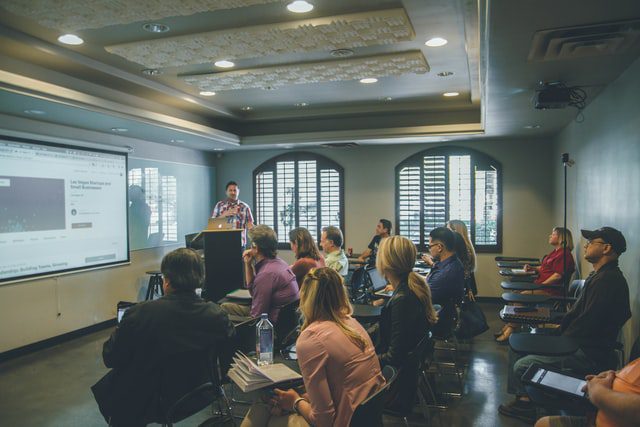Breaking Down Barriers: Innovations in Education for Clinical Sciences Students
The realm of education is undergoing a profound transformation and nowhere is this evolution more striking than in the realm of clinical sciences. The journey of students pursuing careers in clinical sciences is marked by a revolution in their educational experience. The synergy between contemporary methodologies and technology is dismantling the conventional barriers that once restricted learning in this field. This article takes you on a captivating exploration of the world of innovative education for clinical sciences students. We will uncover how these groundbreaking developments are enhancing the learning journey, opening doors to real-world training, and empowering the future generation of clinical professionals. Join us as we embark on a voyage of discovery to learn about the latest strategies and resources that are reshaping the educational landscape for aspiring clinical scientists.
Using the Power of Clinical Sciences Resources
The foundation of modern clinical sciences education is built upon a treasure trove of resources. These resources encompass an extensive array of tools and materials designed to facilitate learning and bridge the chasm between theory and practice.
One of the primary advantages of these clinical science resources is their accessibility. Gone are the days when students were solely reliant on textbooks and classroom lectures. Today, students have at their disposal a wealth of information and educational materials that can be accessed online. These include e-books, interactive modules, video lectures, and virtual laboratories. These resources empower students to explore complex subjects at their own pace, making learning more flexible and tailored to individual needs.
Moreover, clinical sciences resources often incorporate real-world case studies and simulations. These interactive learning experiences provide students with the opportunity to apply their knowledge in practical scenarios, preparing them for the challenges they will face in their future careers. Imagine virtual patient encounters and simulated surgeries that allow students to hone their clinical skills in a risk-free environment. These experiences build confidence and competence, turning theory into practice.
In addition to digital resources, clinical sciences education has embraced the power of collaboration. Online forums, discussion boards, and peer-to-peer networks offer students a space to engage with their fellow learners, exchange ideas, and request assistance. Collaborative learning not only nurtures a feeling of camaraderie but also stimulates the interchange of various viewpoints and problem-solving strategies among students.
The Role of Technology in Reshaping Clinical Sciences Education
Technology is at the epicenter of the educational revolution in clinical sciences. From cutting-edge medical equipment to innovative software applications, technology is redefining how students learn and practice.
One remarkable advancement lies in the realm of virtual reality (VR) and augmented reality (AR) in clinical education. These immersive technologies transport students into lifelike medical scenarios, where they can interact with virtual patients, perform procedures, and make critical decisions. VR and AR simulations provide a safe and controlled environment for students to develop their clinical skills, allowing for repetition and refinement until mastery is achieved.
Another arena where technology is making a profound impact is in telemedicine or telehealth. With the rising demand for remote healthcare services, clinical sciences students are being trained to provide care via telehealth platforms. This real-world exposure to telemedicine equips students for the evolving landscape of healthcare delivery, where digital consultations and remote monitoring are fast becoming the norm.
Additionally, the integration of electronic health records (EHRs) into clinical sciences education is preparing students for the digital documentation systems they will encounter in practice. Students learn to navigate and use EHRs effectively, ensuring they are well-prepared for the administrative aspects of their future roles.
Bridging Theory and Practice with Real-World Case Studies
Integrating real-world case studies into clinical sciences education serves as a crucial bridge between theoretical knowledge and practical skills. These case studies allow students to apply their learning to authentic healthcare scenarios, fostering a deeper understanding of medical concepts and honing critical thinking and problem-solving abilities.
They also enhance decision-making skills, cultural competence, and communication, preparing students for the complexities of clinical practice. Moreover, real-world cases offer an experiential learning opportunity within a controlled environment, promoting a holistic approach to patient care. Instructors can assess students’ clinical reasoning and provide valuable feedback, ensuring that learners are well-prepared to excel in their future clinical careers and deliver high-quality patient care.
Breaking Down Geographical Barriers
Another significant stride in clinical sciences education is the demolition of geographical barriers. In the past, conventional education typically required students to be physically present on campus, which posed limitations for individuals in remote or underserved areas. However, technology has played a transformative role in democratizing education, breaking down these geographical barriers.
Online learning platforms, webinars, and virtual classrooms have transformed education by offering students the flexibility to join courses and lectures from anywhere. This inclusive approach has expanded access to education, reaching a more diverse group of learners and overcoming the limitations of physical distance from traditional educational institutions. This accessibility proves especially beneficial for students facing familial or occupational responsibilities that hinder them from relocating for their studies. Furthermore, it facilitates international collaboration, enabling students from diverse global regions to convene within a virtual learning space, fostering a truly globalized educational experience.
Moreover, the availability of recorded lectures and on-demand content allows students to review materials at their convenience, accommodating varying time zones and schedules. This flexibility is a game-changer for clinical sciences students who need to balance their studies with other responsibilities, be it family, work, or personal commitments.
Conclusion
Innovations in clinical sciences education are dismantling traditional barriers and creating a dynamic and inclusive learning landscape. The new generation of clinical professionals emerging from these innovative education systems is exceptionally well-prepared. They have the confidence, competence, and adaptability needed to tackle healthcare challenges effectively. These educational advances promise to produce highly skilled and caring healthcare professionals who will make a significant impact on the field. The journey continues, as the world of clinical sciences education remains on the cusp of exciting new horizons, ready to shape the healthcare landscape of tomorrow.







